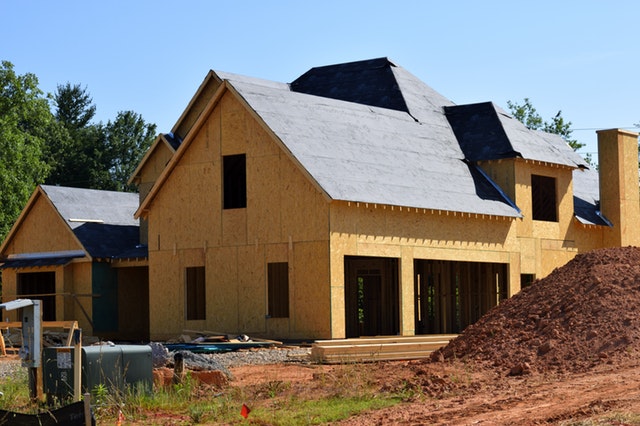FOMC Meeting Minutes: Why Fed’s Rate Policy Reversed Course
 After raising the target range for the federal funds rate in 2018, the Fed’s Federal Open Market Committee did not raise the Central Bank’s key interest rate at its meeting of January 29 and 30. While Committee members did not raise the Fed’s key rate, members were divided on the interest rate decision.
After raising the target range for the federal funds rate in 2018, the Fed’s Federal Open Market Committee did not raise the Central Bank’s key interest rate at its meeting of January 29 and 30. While Committee members did not raise the Fed’s key rate, members were divided on the interest rate decision.
FOMC Members Divided On Interest Rate Decision
Minutes of January’s FOMC meeting indicated that member viewpoints varied about how the Fed should deal with the Fed’s target interest rate range. One group said that interest rate increases may be necessary if inflation increases above the Federal Reserve’s baseline forecast.
Other FOMC members supported raising the Fed’s interest rate range later in 2019 if economic conditions move as expected. Overall, FOMC members said that there were “few risks” in the Committee’s current position of patience, but they were open to reassessing that position according to how economic conditions change.
FOMC Cites Reasons For Halting Rate Increases
Committee members provided several reasons for reversing their 2018 policy of consistent rate hikes including declining economic conditions since early 2018. Global and domestic economic conditions slowed; deteriorating conditions were supported by lower readings on consumer and business sentiment. Federal government policies including the partial government shutdown and then-current trade policy contributed to the deteriorating economic outlook in late 2018.
Ongoing influences driving FOMC monetary policy decisions include the Fed’s mandate for achieving maximum employment, stable prices and moderate long-term interest rates. Because short-term data change frequently, Fed monetary policy reflects long-term goals, medium-term outlook and the Committee’s risk assessments in multiple financial and economic sectors. The Committee said that long-term inflation of two percent indicates stable pricing as required by federal mandate; any prolonged deviation above or below the two percent reading would concern Committee members.
FOMC indicated progress with its maximum employment mandate by changing its long-run unemployment outlook from 4.60 percent to 4.40 percent, which suggests a strong outlook for job markets. Fourth quarter Gross Domestic Product was described as “solid”. The meeting minutes indicated that some data typically used by Committee members was limited by the government shutdown.

 Home price growth continued to struggle in November, with Case-Shiller’s 20-City Home Price Index moving from October’s reading of 5.30 percent annual growth to 5.20 percent growth in November. This was the lowest reading since January 2015.
Home price growth continued to struggle in November, with Case-Shiller’s 20-City Home Price Index moving from October’s reading of 5.30 percent annual growth to 5.20 percent growth in November. This was the lowest reading since January 2015. After two months of declining builder confidence, the National Association of Home Builders Housing Market Index gained two points in January with a reading of 58. Component readings of the HMI were also higher with builder confidence in current market conditions rose two points to an index reading of 63. Builder confidence in housing market conditions over the next six months rose three points to 64.
After two months of declining builder confidence, the National Association of Home Builders Housing Market Index gained two points in January with a reading of 58. Component readings of the HMI were also higher with builder confidence in current market conditions rose two points to an index reading of 63. Builder confidence in housing market conditions over the next six months rose three points to 64. Atlanta, Charlotte, New York and Los Angeles are always on the real estate radar because of big ticket sales and good media coverage. The secondary markets – those markets without the celebrity undertones – may actually be better deals. With the price of borrowing money rising and occupation rates dropping in primary markets, places like Nashville and Birmingham are looking better to investors.
Atlanta, Charlotte, New York and Los Angeles are always on the real estate radar because of big ticket sales and good media coverage. The secondary markets – those markets without the celebrity undertones – may actually be better deals. With the price of borrowing money rising and occupation rates dropping in primary markets, places like Nashville and Birmingham are looking better to investors. Obstacles facing home builders have caught up with high builder confidence according to the National Association of Home Builders Housing Market Index for November. Builder confidence dropped eight points to an index reading of 60, which was the largest month-to-month drop in builder confidence since 2014. November’s decline in builder confidence was greater than the largest month-to-month decline during the housing crisis.
Obstacles facing home builders have caught up with high builder confidence according to the National Association of Home Builders Housing Market Index for November. Builder confidence dropped eight points to an index reading of 60, which was the largest month-to-month drop in builder confidence since 2014. November’s decline in builder confidence was greater than the largest month-to-month decline during the housing crisis.